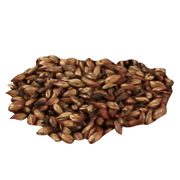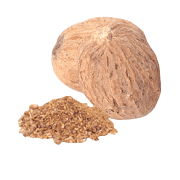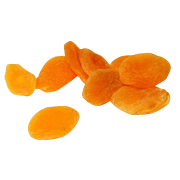DalwhinnieSingle Malt Scotch Whisky
Dalwhinnie was almost unknown prior to its inclusion in Diageo's Classic Malts seriesin 1987, and the majority of the spirit produced there still goes into the Buchanan's and Black and White blends, despite it being in the top 15 best-selling malts worldwide.
The distillery's declared status as the Highlands representative in the Classic Malt range has raised a few eyebrows over the years, given that many writers (including Michael Jackson) consider it to be in the sub-region of Speyside (already represented by Cragganmore in the Classic Malts). Indeed, the distillery's original name was Strathspey, and its closest neighbouring distillery is The Speyside. It was formally classified a Speyside malt in 2009 when the region's borders were defined in The Scotch Whisky Regulations of that year.
Minor quibbles aside, the standard-issue Dalwhinnie has remained a consistently pleasing whisky, with delicate peat notes and a floral edge around a clean, honeyed, malty centre. The Distiller's Edition of Dalwhinnieis finished in oloroso casks, adding an extra depth, while a trio of long-aged cask-strength expressions appearing over the last few years as part of Diageo's Special Releases have been very well-received, proving that this well-made spirit can age extremely well.
In common with its Classic Malts stablemates, independent bottlings of Dalwhinnie are so rare as to be practically non-existent.
Tim F (with additional info from Ingvar Ronde's Malt Whisky Yearbook, Michael Jackson's Malt Whisky Companion and Misaka Udo's The Scotch Whisky Distilleries)
From the website:
When the water you start with comes from the highest mountain source of any malt, you expect something rather fine. And Dalwhinnie, for whisky writer Roger Voss a "surprisingly soft whisky...from Scotland's highest, most remote distillery", does not disappoint. The source, Lochan an Doire-Uaine, (Gaelic for "lake in the green grove"), lies at 2,000 feet in the Drumochter Hills. From it, all the pure spring water used in distilling Dalwhinnie flows over rich local peat through Allt an t'Sluic, the distillery burn. No other distillery may use the water from this source – therefore no other distillery is able to yield Dalwhinnie’s uniquely clean, accessible, malty-sweet taste, giving way to a smooth and smoky Highland mouthfeel.
Dalwhinnie distillery is situated between the gentle, grassy style of the Lowlands and the austere, firm body of Speyside, which begins some 25 miles to the north. The style is that of the Highlands; a resilient marriage of gentleness and spirit.
As befits a malt from such a place, Dalwhinnie defies simple description. Too gratifying for an aperitif alone, yet too gentle and delicate to be thought rugged or unapproachable; this combination of delicacy and depth sets it apart.
“The Highland peatiness is very restrained at first, balanced by heathery sweetness, but intensifies toward the finish. Clear flavours against a very clean background. A good aperitif.” Michael Jackson, whisky writer and expert.
DALWHINNIE DISTILLERY
Many late Victorian distilleries were bravely sited; "madly located" Dalwhinnie, one of the highest of all distilleries - at 1073 feet - and now home to the Classic Malts’ delicate and smoky 15 year old Highland malt, was no exception.
"Why on earth, you may think," continued the writer of this memorable epithet, "would anybody choose to build a distillery in this desolate, wind-sliced, rain-lashed patch of Highland wilderness?"
A good reason, certainly, was that it was close to the geographic center of the Highlands and so enjoyed easy access to the reliable link to market offered by the new Highland Railway. This helped the distillery to survive its often fragile beginnings, just as surely as Dalwhinnie's setting had earlier helped the village itself to gain an importance beyond its size.
The Gaelic word from which the name Dalwhinnie comes is Dail-coinneeamh, also spelt Dail-Chuinnidh, which translates as "plain of meetings." Here, on these high windswept pastures between the Grampian and Monadhliath mountain ranges, 18th Century cattle drovers would pause on their journey south, over the Drumochter pass to the great trysts or cattle markets of Crieff and Falkirk. Where it can, Dalwhinnie retains the old ways. Traditional wood is still used for its washbacks, for example. Just two copper stills, as there have always been, send the alcohol into the lye pipes on its way to the stillman.
He skilfully separates the "foreshots" and "feints" before allowing the purest middle part of the distillation to reach the oak casks in which Dalwhinnie will rest on its way to maturity.
Increasingly rare wooden worm-tubs, a landmark outside the distillery as distinctive as its pagoda roofs, help this remain a spirit of real character. Old hands will say that the slow deliberate condensation, which takes place in a copper worm, can't be matched in more modern condensing vessels. Perhaps it gives Dalwhinnie that little extra body?
As well as being a fine distillery, Dalwhinnie also has the distinction of being an official weather station, with one of the lowest recorded average temperatures in Great Britain.
Character and Style of Dalwhinnie
-
 Malt
Malt
-
 Honey
Honey
-
 Nutmeg
Nutmeg
-
 Dried Fruit
Dried Fruit
- Food suggestion
- Dalwhinnie goes particularly well with chocolate cakes and other chocolate desserts, especially if served chilled.
- Taste style
- Smooth. Smooth malts are likely to hold more sweetness than saltiness and tend to be more creamy than dry.
Filter
Price Range
Bottling Status
Age
Vintage
Cask Type
Bottler
Series
Strength
Size
Limited Edition
Flavour Profile
Colouring

Free
GiftDalwhinnie 15 Year Old
$47.78
($68.25 per litre)

Dalwhinnie Distillers Edition2022 Release
$76.48
($109.25 per litre)

Dalwhinnie Winter's Gold
$46.72
($66.74 per litre)

Dalwhinnie 2006 Distillers EditionBot.2021
$75.41
($107.74 per litre)

Dalwhinnie 15 Year OldSmall Bottle
$18.34
($9.17 per 10cl)

Dalwhinnie 15 Year OldCentenary 1898-1998
$211.52
($302.17 per litre)

Dalwhinnie 15 Year OldBot.1990s
$186.01
($265.73 per litre)

Dalwhinnie 15 Year OldBot.1980s
$345.45

Dalwhinnie 15 Year OldBot.1980s
$345.45

Dalwhinnie 15 Year OldCentenary 1898-1998
$186.01
($265.73 per litre)

Dalwhinnie 15 Year OldBot.1980s
$265.73
($354.31 per litre)

Dalwhinnie 15 Year OldBot.1990s
$186.01
($265.73 per litre)

Dalwhinnie 15 Year OldBot.1990s Litre
$265.73

Dalwhinnie 15 Year OldBot.1990s
$265.73

Dalwhinnie 198930 Year Old Special Releases 2020
$690.90
($987 per litre)

Dalwhinnie 15 Year OldBot.1990s
$186.01
($265.73 per litre)

Dalwhinnie 8 Year OldBot.1980s
$424.11
($565.48 per litre)

Dalwhinnie 12 Year OldManager's Dram
$317.81
($454.02 per litre)

Dalwhinnie 15 Year OldBot.1990s Litre
$265.73

Dalwhinnie 8 Year OldBot.1980s
$398.60
($531.46 per litre)

Dalwhinnie 15 Year OldFriends of the Classic Malts
$239.16
($341.65 per litre)

Dalwhinnie Centenary15 Year Old
$372.02
($531.46 per litre)



 Dalwhinnie
Dalwhinnie